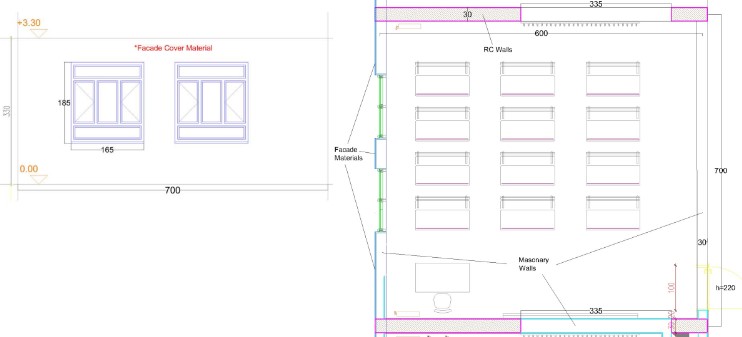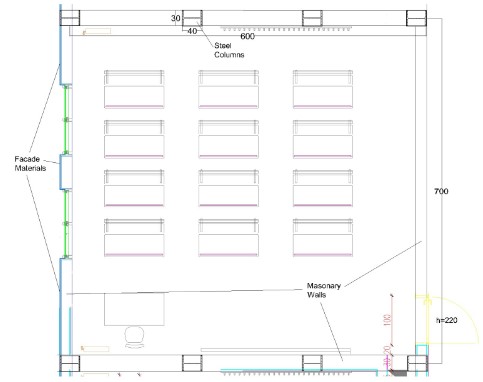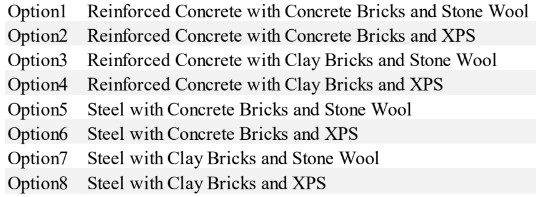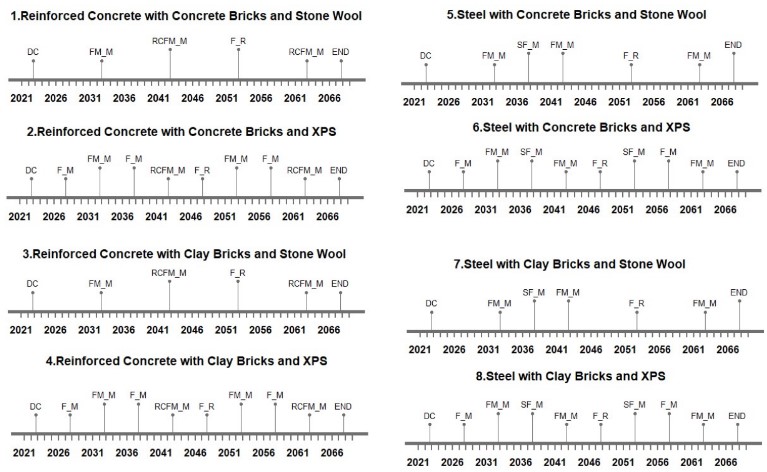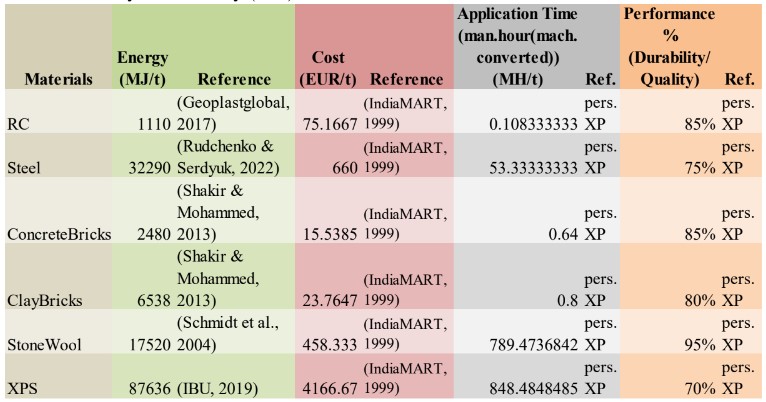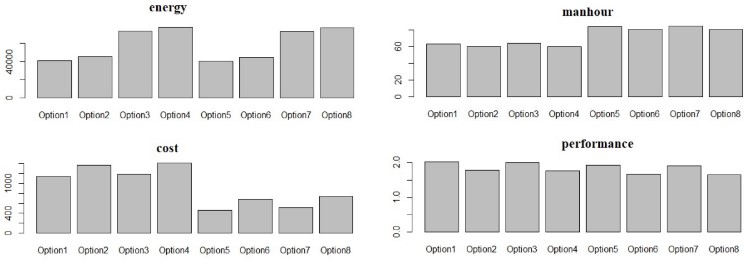Risk Based Assessment
The problem domain of this study is the deterioration of reinforced concrete school buildings during their lifetime. The buildings have various dimensions, forms, characteristics, and functions depending on the location, financial conditions, specifications, requirements, and design style of the school. School buildings are utilized for more than 45 years, and it needs much more attention to protection.
The below table represents the possible states of the building during its lifetime: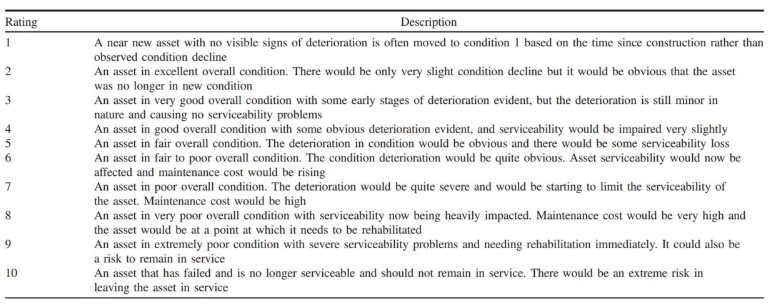
LCA & MCDA
In the scope of this study, a classroom, as a subsystem of a school building, will be analyzed. In any kind of classrooms, there are three main building materials such as structural materials, masonry materials, and facade main materials. Moreover, there are many types of those main materials, but essential ones are Reinforced Concrete and Steel as Structural Materials, Concrete Bricks and Clay Bricks as Masonry Materials, and Stone Wool and XPS as Facade Main Materials.
The below table represents different design options for the system:
Life Cycle Timeline: For the Life-cycle Analysis, there are six different events like Facade Maintenance, Facade+Masonary Maintenance, Steel+Facade Maintenance, RC+Facade+Masonary Maintenance, Facade Replacement XPS, and Facade Replacement Stone Wool. School buildings are utilized for more than 45 years, and it needs much more attention to protection. Here is shown that Stone Wool requires less Facade Maintenance than XPS and Facade Replacement is later than XPS, Reinforced Concrete requires less Structural Maintenance than Steel, and between Concrete Bricks and Clay Bricks no such big differences occur during the lifetime.
Life Cycle Inventory:
Quantities of all materials were given in the table above, and all those materials will be analyzed according to Energy (MJ/t), Cost (EUR/t), Application Time and Productivity (man.hour(machine converted)) (MH/t), Performance % (Durability/Quality).After all analysis of amount of materials consumed during life cycle, it is obvious that Clay Bricks make a large differences in energy usage, and it seems Clay Bricks are not energy-efficient materials. Moreover, steel-structured classrooms are required less money than classrooms with reinforced concrete. On the other hand, it is interesting that to build a steel-structured classroom more manhours are needed than a concrete classroom so although material costs are higher than steel structure, the total cost might be less with the workmanship. When it comes to performance, structures with stone wools have higher performance than facades with XPS as expected.
MCDA:
